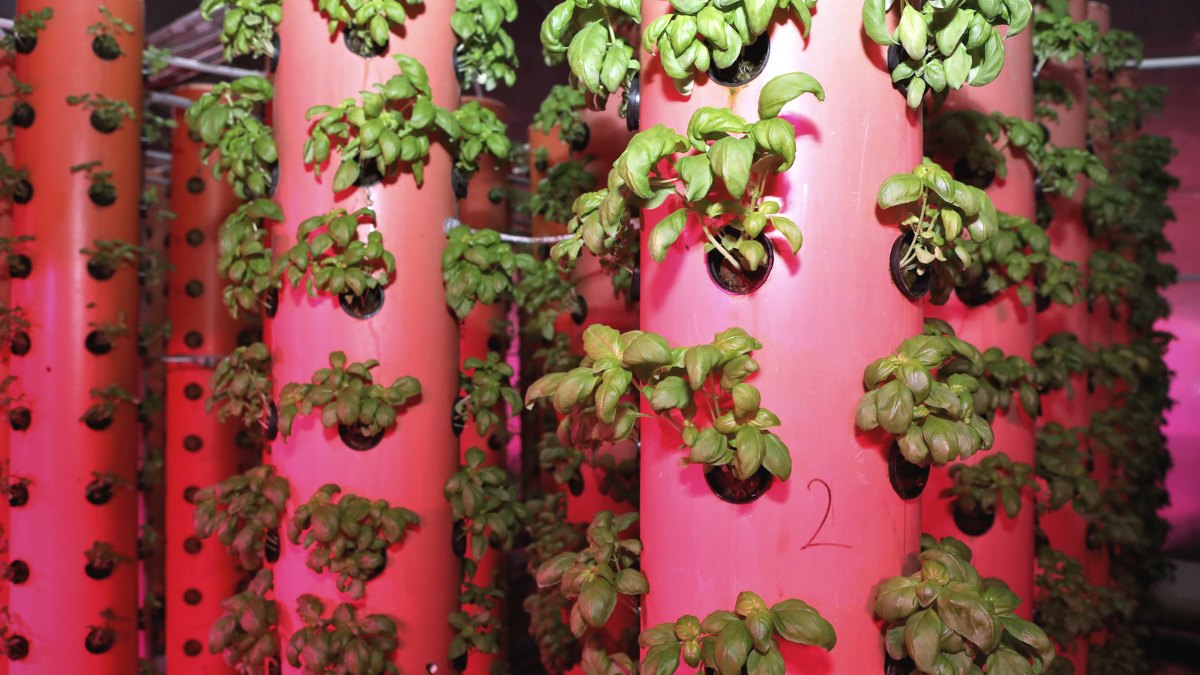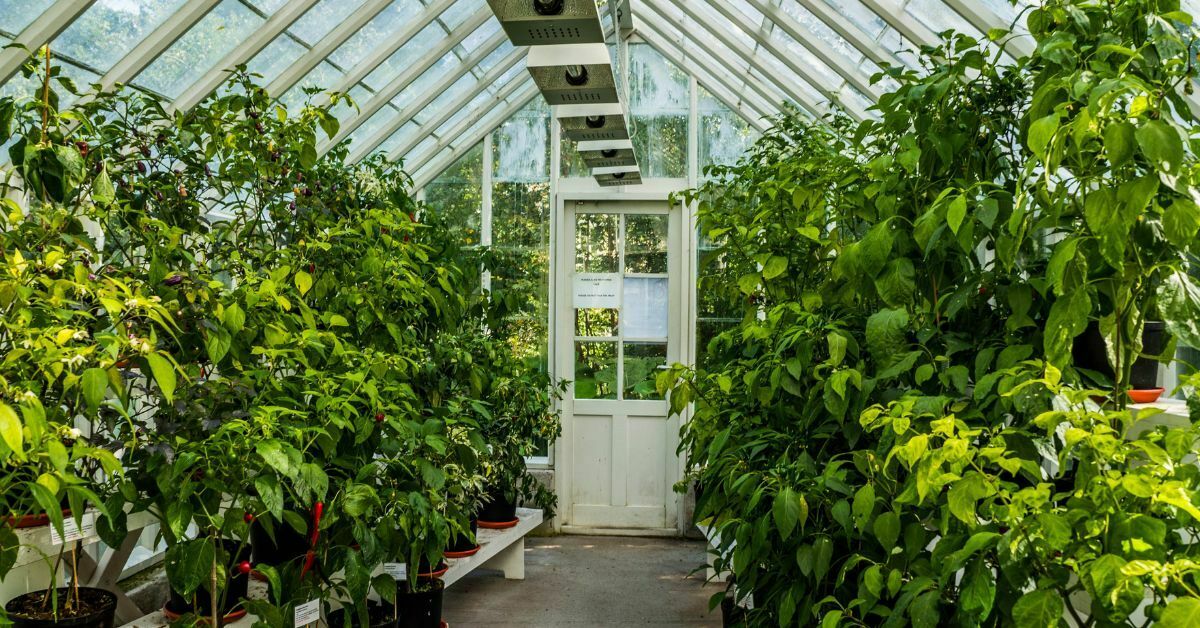I’m so glad to have the opportunity to talk to you about aeroponic gardening. As an aeroponic gardening enthusiast, I can tell you that this innovative method of growing plants has truly changed the way we approach agriculture. With aeroponic gardening, you can grow your own produce with ease and efficiency, and reap the benefits of fresh, nutrient-rich food right from your own home.
Whether you’re a seasoned gardener or just starting out, aeroponic gardening is a unique and exciting way to cultivate your own crops. So, let’s dive in and explore the world of aeroponic gardening together!
Definition of Aeroponic Gardening
Aeroponic gardening is a soil-free method of growing plants in which roots are suspended in air and periodically misted with a nutrient-rich solution. This unique method provides plants with optimal access to oxygen, water, and nutrients, resulting in faster growth rates, higher yields, and healthier plants.
With aeroponic gardening, plants are grown in a controlled environment that can be precisely adjusted to meet their needs, making it a highly efficient and effective method of agriculture. Whether you’re a hobbyist looking to grow fresh produce for your family, or a commercial grower seeking to maximize crop yields, aeroponic gardening is definitely worth considering!
Advantages of Aeroponic Gardening
Aeroponic gardening offers numerous benefits over traditional soil-based growing methods. Some of the most notable advantages of aeroponic gardening include:
Faster Growth Rates:
One of the key advantages of aeroponic gardening is the ability to achieve faster growth rates compared to traditional soil-based growing methods. This is because the roots of the plants are continuously misted with a water and nutrient solution, providing them with an optimal combination of moisture, nutrients, and oxygen.
Efficient Water Use:
Aeroponic systems use significantly less water than traditional soil-based systems because the water is delivered directly to the roots and is not lost through evaporation or absorption by the soil.
Increased Efficiency and Reduced Waste
Aeroponic gardening is also much more efficient and results in reduced waste compared to traditional soil-based growing methods. The closed-loop design of aeroponic systems means that water and nutrients are reused, reducing the amount of resources required for each crop cycle. Additionally, the precise control over the growing conditions means that you can reduce the risk of plant diseases and pests, reducing the need for harmful chemicals and pesticides.
Pest and Disease Control:
The closed environment of an aeroponic system helps to prevent the spread of pests and diseases, which can significantly reduce the need for pesticides and other chemicals.
Better Crop Yields:
Aeroponic systems provide plants with ideal growing conditions, which results in higher quality crops with better yields.
In addition to faster growth rates, aeroponic gardening can also result in higher yields. This is due to the ability to precisely control the water and nutrient levels, as well as the ability to provide the plants with ideal growing conditions, such as consistent light and temperature levels.
Space-saving:
Aeroponic gardens can be set up in smaller spaces, making them a great option for urban dwellers with limited outdoor space.
Year-round Production:
With an aeroponic system, you can grow crops year-round, regardless of the weather conditions outside.
Environmentally Friendly:
Aeroponic systems are highly efficient, reducing the amount of water and energy needed to grow crops, making them a more sustainable option compared to traditional soil-based systems.
As you can see aeroponic gardening provides numerous benefits over traditional soil-based growing methods, making it an exciting and innovative option for hobbyists and commercial growers alike.
Better Control Over Growing Conditions
In aeroponic gardening, you have much more control over the growing conditions, which can result in healthier, more productive plants. You can easily adjust the water and nutrient levels, as well as the light and temperature levels, to ensure that your plants are receiving the best possible care.
In conclusion, aeroponic gardening offers a number of advantages over traditional soil-based growing methods. Whether you’re a hobbyist grower or a commercial grower, an aeroponic system can help you achieve faster growth rates, higher yields, better control over growing conditions, and increased efficiency and reduced waste.
Explanation of Aeroponic System
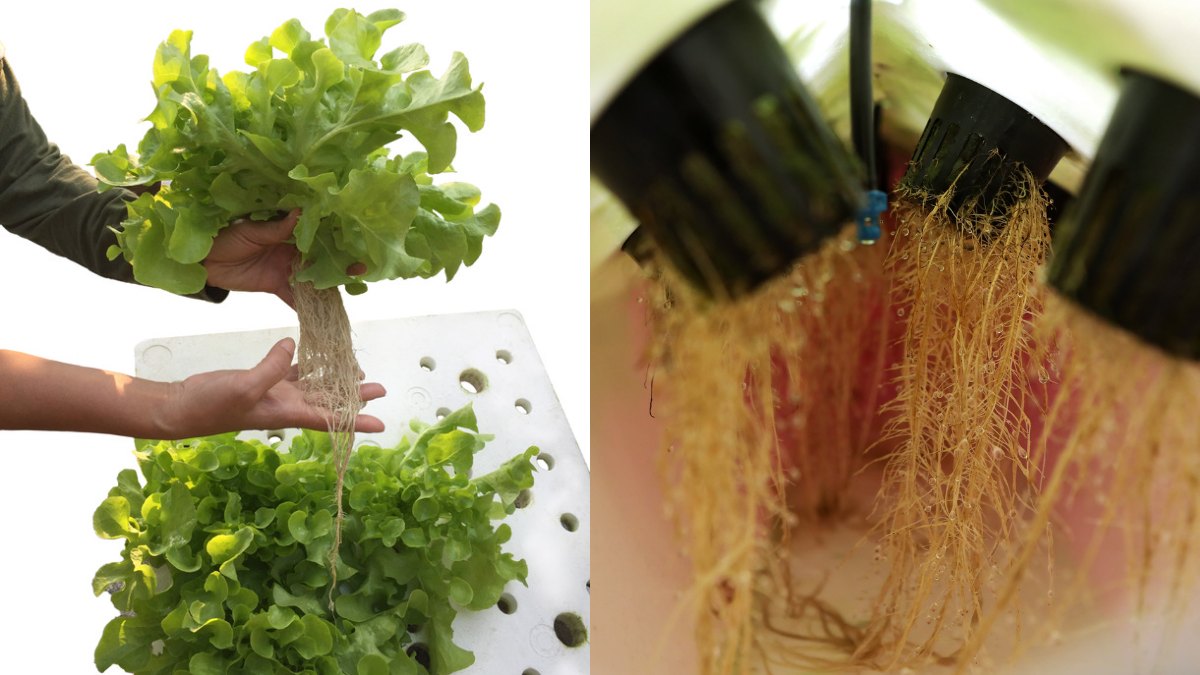
An aeroponic system is a closed-loop system that uses mist to deliver water, nutrients, and oxygen to the roots of plants. The basic components of an aeroponic system include:
Grow Chamber:
The grow chamber is the container that holds the plants and provides the environment in which they grow. It can be made of a variety of materials, including plastic, wood, or metal.
Pumps and Reservoir:
The pump and reservoir supply water and nutrients to the system, and typically consist of a water tank, a pump, and tubing.
Mist Nozzles:
The mist nozzles are responsible for delivering the water and nutrient solution to the roots of the plants. They are typically located at the top of the grow chamber and can be adjusted to provide the ideal misting frequency and coverage.
Support Structure:
The support structure is used to hold the plants in place and is typically made of plastic or metal.
Lighting:
Aeroponic systems often include grow lights, which provide plants with the light they need to grow and produce fruit.
Control System:
The control system is responsible for monitoring and adjusting the various components of the system, including water levels, nutrient levels, and lighting conditions.
In an aeroponic system, plants are suspended in the grow chamber with their roots exposed to the misting environment. The misting frequency and duration are carefully controlled to provide the ideal combination of water, nutrients, and oxygen to the roots, resulting in faster growth rates, higher yields, and healthier plants.
Types of Aeroponic Systems
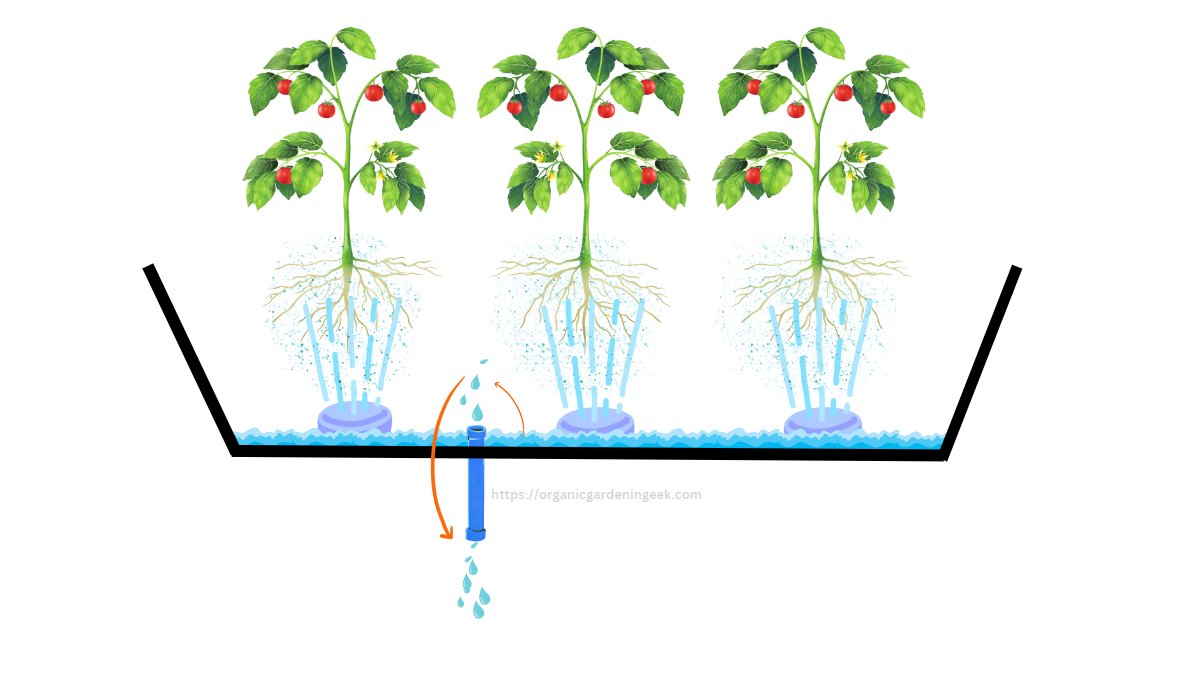
There are several varieties of aeroponic systems, each with its own distinct design and way of supplying water, nutrients, and oxygen to plant roots. The following are some of the most prevalent kinds of aeroponic systems:
1. High-Pressure Aeroponic Systems:
High-pressure aeroponic systems use high-pressure pumps to create a fine mist of water and nutrients that is delivered directly to the roots of the plants. These systems are often used in commercial growing operations and can be highly efficient and effective.
2. Low-Pressure Aeroponic Systems:
Low-pressure aeroponic systems use lower pressure pumps to create a more gentle mist that is delivered to the roots of the plants. These systems are often used in smaller, home-based growing operations and can be more affordable and easier to maintain.
3. Continuous Aeroponic Systems:
Continuous aeroponic systems are designed to continuously mist the roots of the plants, providing them with a constant supply of water, nutrients, and oxygen. These systems are often used in commercial growing operations and can be highly efficient and effective.
4. Intermittent Aeroponic Systems:
Intermittent aeroponic systems periodically mist the roots of the plants, typically for a few seconds at a time. These systems are often used in smaller, home-based growing operations and can be more affordable and easier to maintain.
5. Deep Water Culture Aeroponic Systems:
Deep water culture aeroponic systems are designed to immerse the roots of the plants in a nutrient-rich water solution, while providing them with access to air. These systems are often used in commercial growing operations and can be highly efficient and effective.
Each form of aeroponic system has its own set of benefits and drawbacks, and the best system for you will be determined by your personal demands and objectives. There is certain to be an aeroponic system that is appropriate for you, whether you are a hobbyist hoping to grow fresh fruit for your family or a professional producer aiming to enhance crop yields.
To start an aeroponic system, you will need the following key components:
- Grow Chamber: A suitable container to hold the plants and provide the growing environment.
- Pumps and Reservoir: A water tank, pump, and tubing to supply water and nutrients to the system.
- Mist Nozzles: To deliver the water and nutrient solution to the roots of the plants.
- Support Structure: To hold the plants in place.
- Lighting: Grow lights to provide the plants with light for growth and fruit production.
- Control System: To monitor and adjust the various components of the system.
- Seeds or Seedlings: To start your aeroponic garden.
- Nutrient Solution: A mixture of water and nutrients specifically formulated for aeroponic gardening.
- Oxygen: A source of oxygen, such as an air pump or aeration stone, to ensure the roots of the plants receive the proper amount of oxygen.
Setting up an Aeroponic Garden
Setting up an aeroponic garden can seem daunting at first, but with a little research and preparation, it can be a rewarding and relatively simple process. Here are the steps you should follow when setting up an aeroponic garden:
Choose the Right Location: The first step in setting up an aeroponic garden is to choose the right location. You will need a space with access to electrical outlets and a source of water. Additionally, you should consider factors such as light exposure, temperature, and humidity when choosing a location.
Determine Your Budget: Aeroponic gardens can range from simple, home-based systems to more complex, commercial-scale systems. Determine your budget before you begin shopping for equipment and materials, as this will help you narrow down your options and avoid overspending.
Choose the Right System: There are several types of aeroponic systems to choose from, each with its own unique design and capabilities. Consider your specific needs and goals when choosing a system, and research the different options available to you.
Purchase the Right Equipment: Once you have chosen your system, you will need to purchase the necessary equipment and materials. This may include a grow chamber, nutrient and water pumps, misting nozzles, and a growing medium, among other things.
Assemble Your System: With all of your equipment and materials on hand, you can begin assembling your aeroponic garden. Follow the instructions provided with your system, and don’t be afraid to reach out to the manufacturer or other experts for help if you have questions.
Install Lighting: Lighting is an important factor in aeroponic gardening, as it provides the energy that the plants need to grow. Choose the right type of lighting for your system, and install it in a manner that provides the plants with the right intensity and duration of light.
Fill the Grow Chamber: With your system assembled and your lighting installed, you can begin filling the grow chamber with your growing medium and plant your seeds or seedlings.
Begin Watering and Misting: Begin watering and misting the roots of your plants according to the instructions provided with your system. Monitor the plants carefully and make any necessary adjustments to ensure that they are receiving the right amount of water, nutrients, and light.
With these steps in mind, you can be well on your way to creating a successful aeroponic garden. Whether you’re growing fresh produce for your family, or raising plants for commercial purposes, an aeroponic garden can provide you with a highly efficient, productive, and sustainable growing environment.
Caring for Plants in an Aeroponic Garden
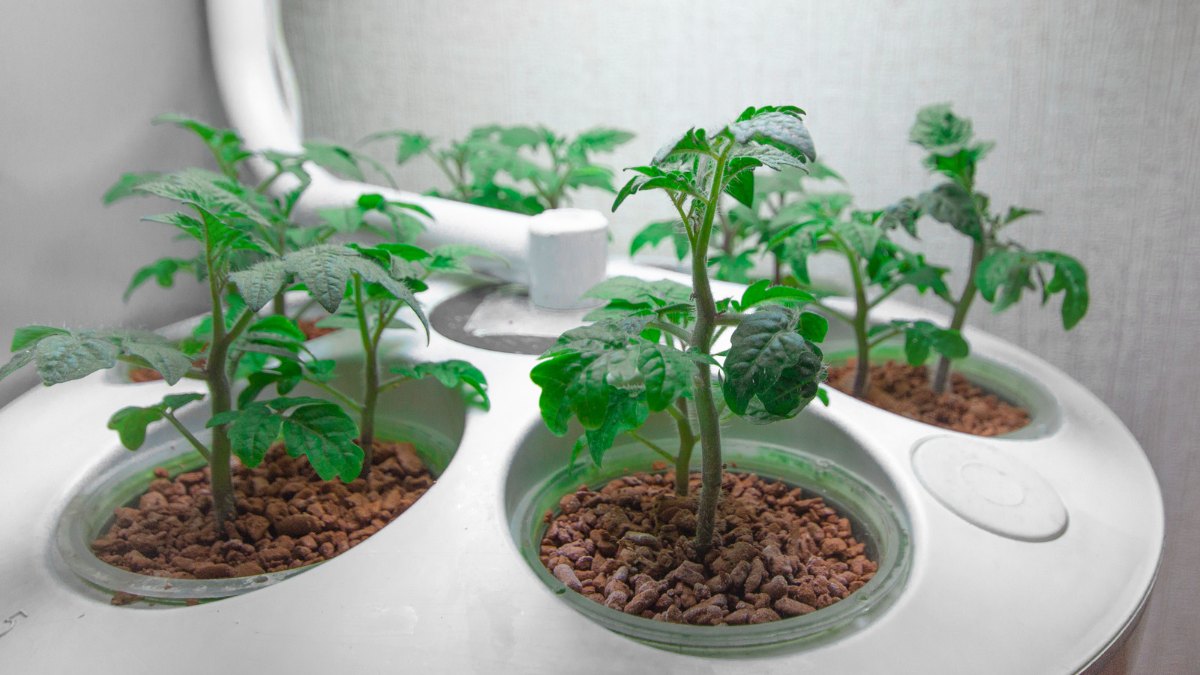
Caring for plants in an aeroponic garden requires attention to several key factors, including water and nutrient levels, lighting, temperature, and pest control. Here are some tips for caring for your plants in an aeroponic garden:
Water and Nutrient Levels: The water and nutrient solution in your aeroponic garden should be regularly monitored to ensure that your plants are receiving the right balance of moisture, nutrients, and oxygen. Adjust the solution as necessary to meet the specific needs of your plants.
Lighting: Lighting is a critical factor in aeroponic gardening, as it provides the energy that the plants need to grow. Make sure that your plants receive the right intensity and duration of light to support their growth.
Temperature: The temperature in your aeroponic garden should be kept within a range that is suitable for your specific plants. Monitor the temperature regularly and make any necessary adjustments to ensure that your plants are growing in an environment that is optimal for them.
Basic guidelines for ideal aeroponic growth circumstances in a greenhouse with a controlled environment: Good, uninterrupted, full sun all year long. (60-65 °F) at night, between 16 and 18 °C (depending on crop) Temperature throughout the day: 24–35 °C (75–95 °F).
Pest Control: Aeroponic gardens are generally free of many of the pests that can be a problem in traditional soil-based gardens. However, it’s still important to monitor your plants for signs of pests and to take action if necessary to control them.
Pruning: Regular pruning of your plants can help to promote healthy growth and maintain the overall health of your aeroponic garden. Prune your plants as necessary to remove any damaged or diseased leaves, and to encourage branching and the development of new growth.
Maintenance: Regular maintenance is an important part of caring for your aeroponic garden. Clean your system regularly, replace any worn or damaged parts, and make any necessary repairs to ensure that it continues to function effectively.
By following these tips, you can help ensure that your plants are growing in the best possible conditions, and that your aeroponic garden is healthy and productive. With proper care and attention, your aeroponic garden can provide you with a bountiful harvest of fresh, healthy plants and produce.
Common Challenges in Aeroponic Gardening
Like any form of gardening, aeroponic gardening can present challenges that need to be addressed in order to be successful. Here are some of the most common challenges you may face in your aeroponic garden, and some tips for overcoming them:
Clogging: Clogging can be a problem in aeroponic gardens, particularly in the misting nozzles and tubing, as mineral build-up can occur over time. Regular cleaning and maintenance can help to prevent clogging, and periodic flushing of the system with a cleaning solution can help to remove any mineral build-up that may have occurred.
Water pH: Maintaining the proper pH level in your water and nutrient solution is essential for the health of your plants. Test the pH regularly, and adjust it as necessary to ensure that it remains within the optimal range for your specific plants.
Although each plant will have a different pH need, aeroponic gardening is generally thought to work best in the pH range of 5.5 to 6.5. Most plants thrive in environments that are just slightly acidic.
Pest Infestation: Although aeroponic gardens are generally free of many of the pests that can be a problem in soil-based gardens, pests can still be a challenge in aeroponic gardens. Regular monitoring for signs of pests, and taking action to control them if necessary, is important for maintaining the health of your plants.
Over- or Under-Watering: Maintaining the correct moisture level in your aeroponic garden is critical for the health of your plants. Over-watering can lead to root rot, while under-watering can lead to stress and reduced growth. Monitor the water and nutrient levels in your system regularly, and adjust them as necessary to ensure that your plants are receiving the optimal amount of moisture.
Lighting Issues: Proper lighting is critical for the growth and health of your plants in an aeroponic garden. Make sure that your plants are receiving the correct intensity and duration of light, and adjust the lighting as necessary to meet the needs of your specific plants.
Temperature Control: The temperature in your aeroponic garden should be kept within a range that is suitable for your specific plants. Monitor the temperature regularly, and make any necessary adjustments to ensure that your plants are growing in an environment that is optimal for them.
By addressing these challenges and taking the necessary steps to overcome them, you can help to ensure that your aeroponic garden is healthy, productive, and successful. With proper care and attention, your aeroponic garden can provide you with a bountiful harvest of fresh, healthy plants and produce.
The Best Plants To Grow in Aeroponics For Maximum Yields
Carrots
Hydroponic systems cannot be used to cultivate root crops like carrots because the roots would rot. Carrots and other root vegetables, however, are perfectly achievable when it comes to the finest plants for aeroponic gardens. Carrots grow best in single-level aeroponic systems since you can quickly see when they’re ready to be harvested. Additionally, keep them from becoming too huge so that you can remove them from your aeroponic containers without difficulty.
Tomatoes
One of the greatest plants for aeroponic cultivation is the tomato, particularly the cherry and grape types, which are smaller. Larger types will thrive as well, but you’ll need to include some supports for the taller plants. You may also let the tomatoes dangle downward to develop, depending on your aeroponic system. Since each variety matures at a different pace, growing various types is a wonderful way to stagger harvest periods.
Lettuce
Aeroponic systems are ideal for growing lettuce and other leafy greens like spinach and kale. Since leafy greens are sensitive to temperature changes, it is better to grow them inside. Utilize vertical aeroponic systems to produce more lettuce plants with little to no space loss.
Cucumbers
Cucumbers are an excellent addition when seeking for the finest plants for aeroponic systems. Similar to larger types of tomatoes, cucumber vines will require a support system or trellis to cling to as they develop. If your aeroponic system has room, you may also let them grow downward. With an aeroponic system, you may effortlessly grow tiny and big kinds. Moreover, save some for pickling!
Peppers
Peppers, like cucumbers, will try to grow upward, so you may need to add some supports, particularly if the peppers are bigger variety. One pepper growing advice is to remove or pinch the first round of blooms. As a result, there will be more growth and a higher yield.
Conclusion
In conclusion, aeroponic gardening is a cutting-edge method of growing plants in a controlled, nutrient-rich environment that provides the optimal conditions for plant growth. With its numerous benefits, including faster growth, higher yields, and improved plant health, aeroponic gardening is becoming increasingly popular among hobbyists and commercial growers alike.
However, like any form of gardening, aeroponic gardening does have its challenges, and it is important to be aware of these and take steps to address them. With proper care, attention, and maintenance, however, an aeroponic garden can be a highly productive and rewarding addition to any home or commercial operation.
Whether you are a seasoned gardener or just starting out, aeroponic gardening is an exciting and innovative method of growing plants that is worth exploring. With its many advantages and potential benefits, aeroponic gardening is sure to be an exciting and rewarding addition to your gardening pursuits.
FAQ
What is an aeroponic gardening tower?
An aeroponic gardening tower is a vertical growing system that uses aeroponic techniques to grow plants. It typically consists of a tall, cylindrical tower made of PVC or other materials, with multiple levels for planting. Each level has a series of misters or sprayers that deliver a fine mist of nutrient-rich water to the roots of the plants, providing them with the moisture, nutrients, and oxygen they need to grow.
The vertical design of aeroponic towers provides a number of advantages, including increased growing space in a smaller footprint, improved access to light and air, and better water and nutrient distribution. Aeroponic gardening towers are often used in small-scale home gardens, as well as in larger commercial operations, and are ideal for growing a wide range of plants, including herbs, vegetables, and even some fruits and flowers.
If you are interested in growing plants using aeroponic techniques, a gardening tower is a great option to consider. With proper care and attention, it can provide you with a productive, high-yielding garden that is easy to manage and maintain.
How Much Does An Aeroponic System Cost?
You may construct your own aeroponic system for much less than a hundred dollars. But if you want to purchase a design that’s already been built, you can expect to spend more than $1,000 on it. A high-quality trained aeroponic system typically begins in the four-figure capacity range and includes a backup power source as well as mechanical nutrition monitoring.
What Are the Differences Between Hydroponics and Aeroponics?
Although aeroponics may be thought of as a subset of hydroponic gardening, there is a significant distinction between the two in terms of the growing medium. While both aeroponic and hydroponic systems eliminate the need for soil, hydroponic setups immerse the root zone in a soilless medium.
Vermiculite, mineral wool, coconut fiber (also known as coco coir or coconut coir), peat moss, clay pellets, sand, perlite, and a wide variety of other materials may all be used to create this soil alternative. To promote root development, plants grown in aeroponic systems have their roots suspended in a nutrient-rich fluid sprayed at them by misters.
